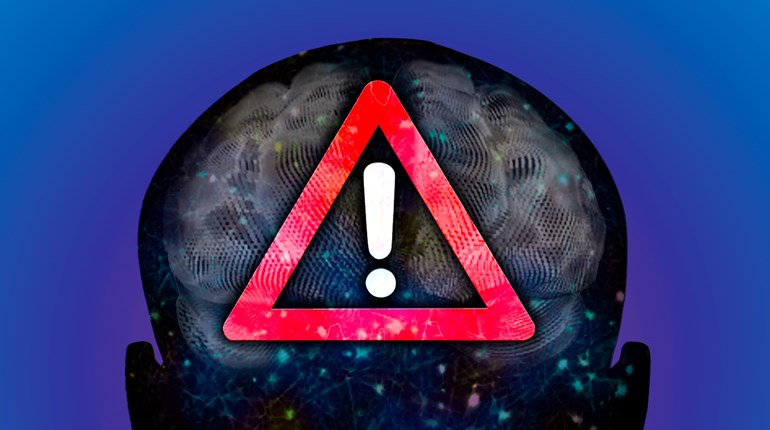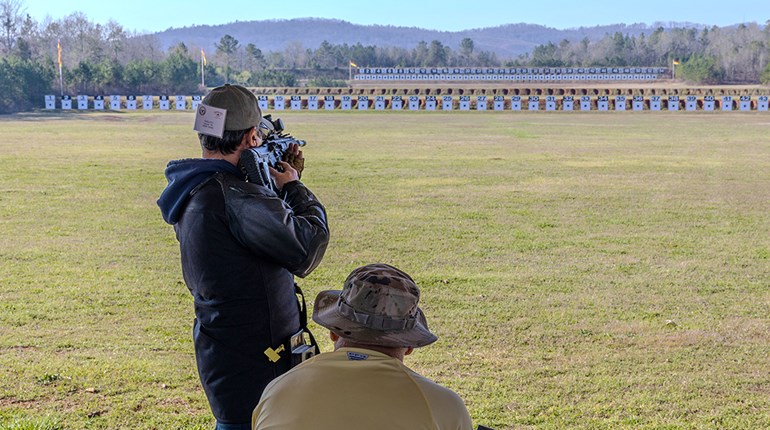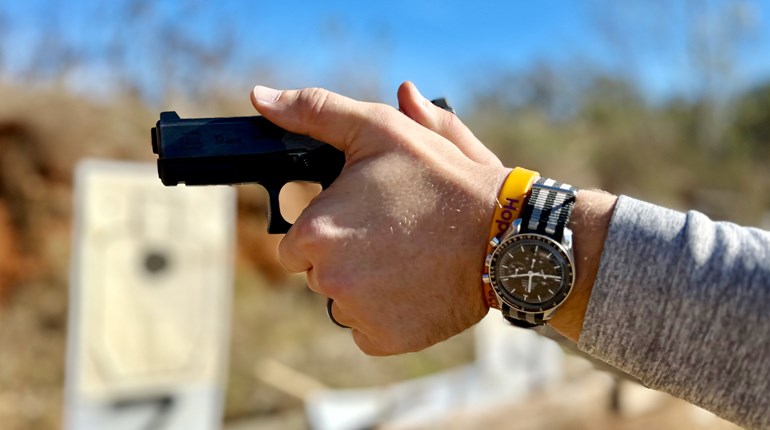
Looking at the target after firing can tell you a lot about your shooting. Here’s a quick guide to help you spot some of the more common marksmanship errors, all based upon shooting a pistol with two hands on the gun.
No Group
When there's no group, this often means you are looking at the target rather than the front sight. There’s an overwhelming urge to look at the threat in a defensive situation. Similarly, when shooting at a target we want to see our bullet holes, forget about the sights and stare at the target. No group can also be attributed to a combination of shooting errors, but assuming you have basic marksmanship skills it’s likely due to looking at the target.
In this case, it's likely your sights are misaligned, there's no follow through, and you're anticipating the shot and pushing on the pistol. The top of the front sight should be level with the top of the rear sight. Failing to follow through means lifting the eyes off of the sights, which lowers the gun slightly and anticipating the recoil can cause us to push on the gun, actually breaking the wrist and pushing the muzzle down.
Shots High
This means your sights are misaligned, heeling (pushing the barrel up with the heel of the hand), thus you're failing to stop the movement of the pistol as you bring it on target and pushing through the aiming point. If the front sight is high, not level, in the rear sight notch your shots will go high. Heeling is a form of anticipating the shot and pushing the gun up, while failing to stop the gun if bringing it up on target will result in high shots as well.
Shots Low Left or Right
Shots low left or low right means for right handed shooters you are anticipating the shot by clenching the hand and “jerking” the trigger, thus shooting low left, while left-handed shooters will shoot low right. Often described as jerking, jumping on or slapping the trigger, this common error is actually another form of anticipating the shot by clenching the hand. Try this: Point at something with your “finger gun” then quickly tighten the lower three fingers and thumb. Did your trigger finger move?
Shots to Either Side
Shots off to one side or the other mean your sights are misaligned, you're pushing or pulling on the side of the trigger, and failing to align the sights with the master eye. If the front sight is not centered in the rear sight notch, your shots will go off to the side. Having too much or too little finger on the trigger causes pushing or pulling on the side of the trigger and this pulls the muzzle off target. Unequal pressure with the hands can misalign the pistol as well.
This business of aligning the sights with the master eye needs a bit of explanation. Whether you shoot with both eyes open, or one eye closed, the sights need to be in alignment with your dominant eye. This can be accomplished by your firing stance or by moving you head slightly, or by both. Failing to do this, looking through the sights with the wrong eye, has the effect of pointing the barrel off to one side or the other.
Look at the sights, control the trigger and follow through, then examine the target and see what it tells you about what you think you just did. This feedback is essential for fixing shooting errors and improving your marksmanship.




































